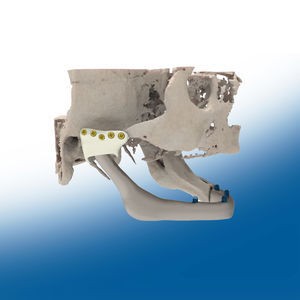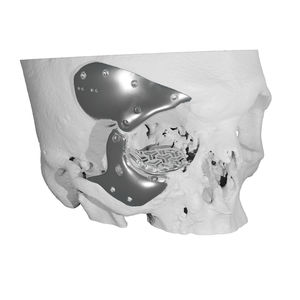
- Secondary care
- Orthopedic surgery
- Revision acetabular prosthesis
- Ortho Baltic Implants

- Company
- Products
- Catalogs
- News & Trends
- Exhibitions
Revision acetabular prosthesis cemented

Add to favorites
Compare this product
Characteristics
- Surgical application
- revision
- Fixation type
- cemented
Description
ip joint endoprosthesis are artificial hip joints that are intended to replace a missing or damaged hip joint. The endoprosthesis helps to recreate the anatomy of a hip joint and to restore its functions.
Hip joint endoprosthesis consists of the following main components: a femoral stem, a liner and an acetabular component. These components may be standard or patient-specific. In cases of severe conditions (for instance, large bone defects, severe deformation, pelvic discontinuity or complications related to the existing implants), a patient-specific implant is recommended to be used.
Patient-specific hip joint implants and patient-specific surgical guides are designed on a patient’s pelvic-femoral anatomical model recreated from computed tomography (CT) images. Unlike standard modular implants used to treat severe clinical conditions, patient-specific hip implants are designed as a single device with anatomically adapted surfaces, which not only eliminates the risk of instability, adapts the implant to the bone rather than the bone to the implant (during surgery, there is no need to shape the bone in order to adapt it tothe implant or use bone cement together with metal acetabular meshes and augments to fill the bone defect), but also restores the biomechanics of the joint with regard to altered axes of knee and ankle joints.
VIDEO
Catalogs
No catalogs are available for this product.
See all of Ortho Baltic Implants‘s catalogsOther Ortho Baltic Implants products
Patient-specific Medical Devices
Related Searches
- Bone plate
- Compression plate
- Metallic compression plate
- Acetabular prosthesis
- Cemented acetabular prosthesis
- Revision acetabular prosthesis
- Cranial implant
- Custom-made cranial implant
- Resection guide
- Periorbital implant
- Custom-made periorbital implant
- Temporomandibular implant
- Custom-made temporomandibular implant
- Hip prosthesis resection guide
*Prices are pre-tax. They exclude delivery charges and customs duties and do not include additional charges for installation or activation options. Prices are indicative only and may vary by country, with changes to the cost of raw materials and exchange rates.






